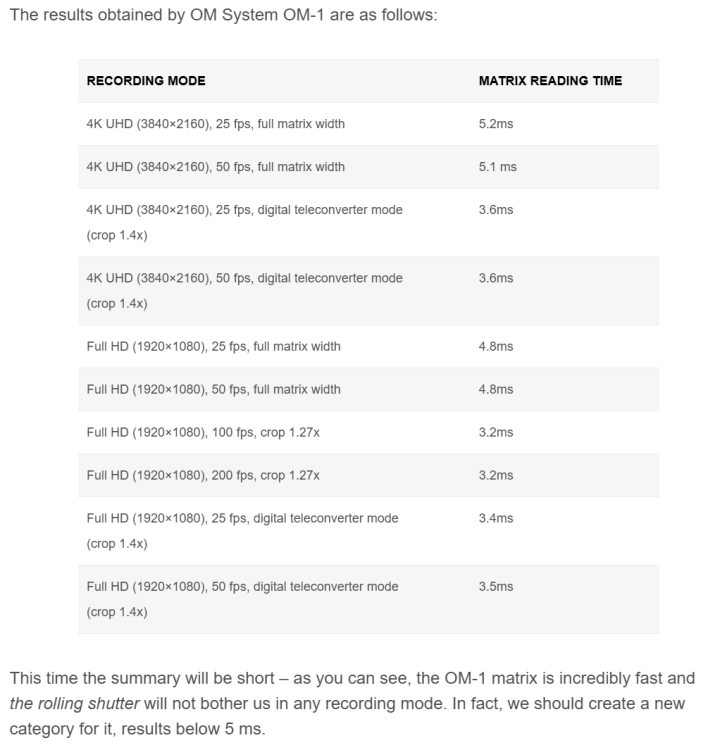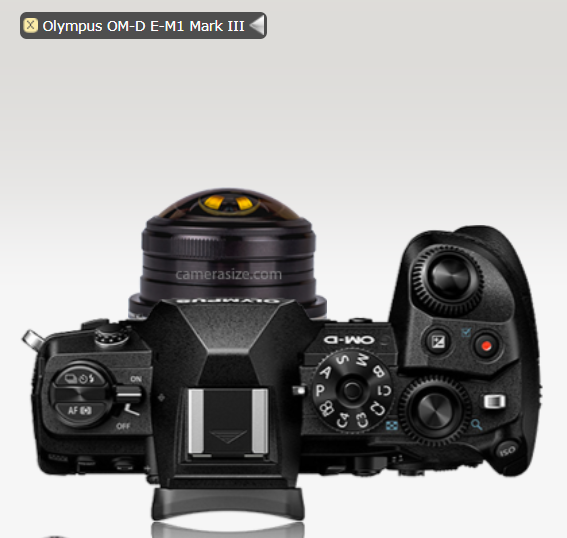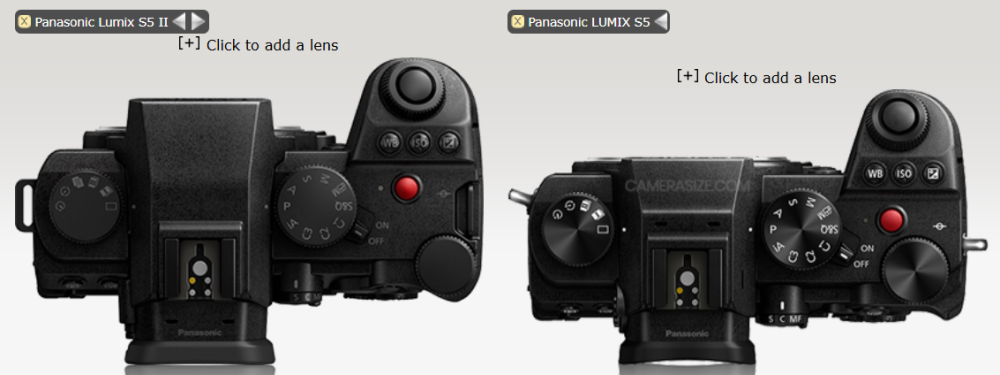
ac6000cw
Members-
Posts
676 -
Joined
-
Last visited
Content Type
Profiles
Forums
Articles
Everything posted by ac6000cw
-
I don't think Fuji (or Sony) does the processing in-camera to produce the final high-res image though? AFAIK they supply software to post-process the images. I think that was the point John was making - Oly/OMDS and Panasonic do that processing in-camera (I don't know about Pentax).
-
A shutter count of 1000 on a pro-grade camera is almost a brand-new level of usage. You did well to find one with the flash included, as often used ones don't have them. Hopefully it'll come with the original Olympus USB-C cable included - I've found the E-M1 ii/iii I've owned to be a bit picky about USB-C cable quality. Enjoy 🙂!
-
OM-1 best 10bit mode - Hybrid LOG Gamma better than OM-LOG?
ac6000cw replied to Andrew Reid's topic in Cameras
If you haven't updated to it already, firmware 1.7 did make some improvements to subject detection (certainly for wildlife, which I often use it for - it's noticeably more reliable and sticky). It also adds an option to assign the 'Menu' function to the 'Trash can' button. That's been possible since at least the E-M1 ii (I've been using it since then). But they've removed it on the OM-3... Even better, you can turn it on and off while recording - there's very short freeze in the video when it changes, but much better than having to stop record - change crop mode - start record. It's a pity they didn't also keep the video-only 1080p pixel:pixel option from the E-M1 ii/iii (a 2.83x crop). -
As the OM-3 is now on camerasize.com, this is the OM-1, OM-3 and OM-5 compared (weights are around 600g, 500g and 410g):
-
It basically shares its internals with the OM-1 ii (including the fast stacked sensor), but looses a card slot, the joystick, has a lower-res EVF and fewer function buttons. (The older and cheaper OM-5 basically reuses the internals from the E-M1 iii).
-
I agree - and what I sometimes do with my OM-1. With the Oly 14-42 EZ or Pana 12-32 pancakes on it the grip is the deepest part and I can fit it in quite a small camera bag (and the combo weighs less than 700g). I use the Oly 12-100mm F4 IS Pro sometimes which is a great lens (and has Sync-IS) but it's 5x longer and 6x heavier than either pancake lens, so I've really got to want to take it... or I sit on the fence and use the Pana 14-140 F3.5-F5.6 instead (3x longer and heavier vs. pancake). While I'd like a small but still high-spec MFT camera, I also like the having deep grip, the two front function buttons and the high-res EVF (and generally good handling), so I'm experimenting with the OM-1 plus small lenses as a good compromise for everyday use. (...and I've got a ZV-1 if I want pocket-sized) Choices...
-
OM-1 best 10bit mode - Hybrid LOG Gamma better than OM-LOG?
ac6000cw replied to Andrew Reid's topic in Cameras
I agree (and 10-bit UHD/DCI 24/25/30p are noticeably sharper). Yes (and for me one of its best features) - test results from this review: https://www.optyczne.pl/59.3-Inne_testy-OM_System_OM-1_-_test_trybu_filmowego_Użytkowanie.html (Google translated - Matrix = Sensor): Re. Natural versus HLG versus OMLog400 - these are contrast curves from the same review (in the 'Tonal Range' section here - https://www.optyczne.pl/59.3-Inne_testy-OM_System_OM-1_-_test_trybu_filmowego_Użytkowanie.html ). The differences are pretty obvious at the black end of the chart. Natural: HLG : OMLog400 : -
But anyone seriously interested in an OM-3 isn't likely to consider those as alternatives - they are larger and heavier (and not retro-looking) cameras.
-
You mean the person who looks after a collection of computer-controlled milling machines that actually do the chiseling 🙂.
-
Do you mean line-level audio input (via the mic jack) i.e. 'PCM Recorder Link' mode as it's called in the menus? That's also in the E-M5 iii and the E-M1 ii, but was dropped on the later generations (E-M1 iii onwards).
-
Nice try - and I suspect that once it drops in price it'll actually sell quite well to people wanting a more retro-look camera. But for me the lack of any sort of grip, no front function buttons and especially the low-res EVF makes it unlikely I'll buy one (as an existing OM-1 owner). Also the left hand dial (with only three positions) seems a waste of space - the E-M1 ii/iii and OM-1 left hand switch arrangement would be far more useful. According to the PetaPixel YouTube review, on the video side they've added a couple of (8-bit only) 'Cinema' picture profiles, and extra video C-AF sensitivity (+2/-2) settings, but still no 'normal' 10-bit video profile - just HLG and OMLog, same as on the OM-1.
-
I don't think they'd kill MFT completely while the GH7 and G9ii are still profitable, if only to get get a decent return on the investment in the 25MP sensor development. If they wanted to do an APS-C camera, the obvious one to me would be an 'S90' with a (top left corner) high-res EVF i.e. a direct competitor to the A6700 and X-S20. I agree, and have seriously thought about buying one plus the Sigma 18-50mm for that reason (I'm a '50p' video person and 4k50 is an enforced APS-C crop anyway). But then the A6700 has a much wider range of lenses available and an EVF... (Fuji cameras are ruled out for me as they don't support plug-in power for external mics).
-
I think that if Panasonic had wanted to just kill off the entire camera division, they'd probably have done it a few years ago, before committing to development and production of the S5 and GH6. They've culled the product range presumably down to what is (or is projected to be) profitable (which in the UK seems to be basically the FF S5D, S5ii/iix, S9, the MFT GH7, G9ii, GH5ii, G97, G100D, the superzoom FZ2000, FZ82 and the compact TZ99). So a few cameras in each sensor size. From what I've read occasionally, the lower-end Panasonic TVs have been more-or-less badge-engineered products from one or more of the big low-cost manufacturers for some time. So it wouldn't surprise me if they basically licensed the brand name (for TVs) to one of those and stopped in-house TV development and production.
-
Which is basically what they did with the E-M5 iii (but with the body re-designed to use plastics to reduce the weight - it's 20% lighter).
-
An MFT sensor is 17.3mm wide, an APS-C sensor is 23.6mm (see https://en.wikipedia.org/wiki/Image_sensor_format#Table_of_sensor_formats_and_sizes ). So the theoretical angle-of-view for the 7-Artisans lens on MFT is: 225 degrees * (17.3/23.6) = 165 degrees. Based on your 'finger test' photo, that is about right i.e. it looks like and calculates to be less than 180 degrees. The maximum depth/projection of the grip from the camera front on my E-M1 iii is a bit less than 30mm (AFAIK it is the same body shape and dimensions as the E-M1 ii).
-
It looks like the 7-Artisans lens is spec'd as an APS-C lens, so the field of view will be less on the smaller MFT sensor. If it helps, this is the Laowa 4mm 2.8 fisheye on an E-M1 iii:
-
The flange to sensor distance for L-mount is 20mm, for MFT it's 19.25mm, so a simple adaptor is not possible - L-mount flange to sensor distance would need to be at least a few mm less than MFT for that to work. Also, MFT is a 2x crop vs. FF, so with an MFT lens the 24MP S1/S1H/S5/S9 sensor would become a 6MP sensor (max resolution of 3000 x 2000 pixels). That's not enough for UHD video or decent resolution stills, so not a very attractive prospect. Nikon Z-mount is only 16mm flange to sensor distance (the shortest of the common mounts), hence other mirrorless lenses can theoretically be adapted to it e.g. the already existing E-mount to Z-mount adaptors. (See https://en.wikipedia.org/wiki/Flange_focal_distance for flange to sensor distance list).
-
Increasing interest in compacts, something is strange
ac6000cw replied to Andrew Reid's topic in Cameras
I agree the RX100/ZV-1 are pretty small (literally 'fit in the palm of your hand' cameras), but I think the ZV-1 combination of very small size, zoom lens, decent on-board sound (with an included wind muff!), mic jack, hot shoe and decent video/stills capability is hard to beat without going up significantly in camera size/weight/cost. The ZV-E10ii and X-M5 with their respective power-zoom kit lenses are probably the obvious 'upgrade' candidates. -
Increasing interest in compacts, something is strange
ac6000cw replied to Andrew Reid's topic in Cameras
As an alternative to an RX100 V, the ZV-1 is about the same size and weight - you loose the pop-up EVF, but gain an articulated LCD, a mic jack and a small grip on the front. It's also significantly cheaper than the RX100. The LX100 is quite noticeably larger than the RX100/ZV-1 (I used to own one), and is more jacket than trouser/pants pocket sized. The S9 feels much chunkier and heavier - even more so with the Smallrig grip attached - than the LX100 (based on playing with an S9 with/without grip in a camera store). -
-
...but by modern mirrorless standards it's quite a large and heavy body (from the left A7CR, A7R V, S5ii, S1R). The 1kg S1R is also about twice the weight of the A7CR. That limits the sales appeal of the S1x bodies to people who are prepared to live with the size and weight (and probably hands potential sales to Sony instead, hence Panasonic putting the S5 into a smaller, lighter body).
-
Not a 'flagship', just a decent value 60MP full-frame camera - I think that's the Lumix-brand market area now (with the possible exception of micro43, which is a niche anyway). The high-end of the partnership is Leica-branded... I'm sure Panasonic could design & build a camera with high-end build and feel, but I don't think they have the brand heritage to sell them at high enough prices. For example, the latest Leica version of the LX100 was launched last year, but no sign of a Lumix version so far...
-
Personally, I think they'll release a 60MP camera, probably in an S5ii body and priced somewhere between the A7CR and A7R V, obviously using much the same internals as the SL3. As for an S1H successor - I wouldn't like to bet either way, with Nikon being pretty aggressive on pricing across the Z-range and Canon offering 8K60p on the R5 ii. Where would Panasonic position it in the market, with the S5iix already offering more video features than most people need or use at a sub-$2000 price, and maybe not having access to the high-end Sony sensors Nikon are using in the Z6 iii/Z8/Z9 (or at least not a price that would make sense commercially). Plus of course they have a video-orientated 'flagship' camera in the guise of the GH7...
-
Being realistic, any S1H successor has to at least match and preferably exceed the basic video specs of the Z6 iii e.g. full-frame UHD/6k video up to 60p with sub-10ms rolling shutter, otherwise there's no point (and even fewer sales)... This means a new (to Panasonic) sensor - the old 24MP sensor just won't cut it in that market any more.
-
Yes. Worse battery life (based on CIPA ratings) plus a bit larger and heavier.









